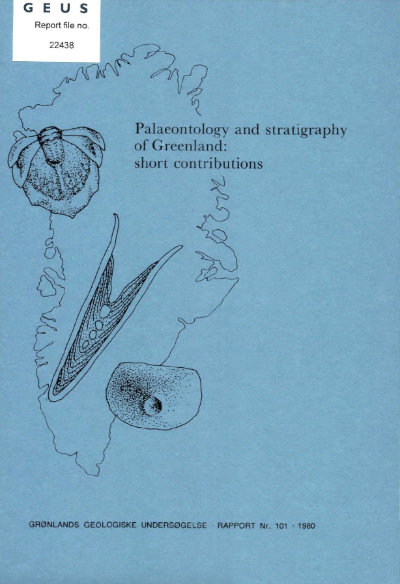Fossils from the Paradisfjeld Group, North Greenland fold belt
DOI:
https://doi.org/10.34194/rapggu.v101.7714Abstract
Fossils are recorded for the first time from the Paradisfjeld Group of eastern North Greenland. The Paradisfjeld Group consists of a thick sequence (c. 1000 m) of re-deposited carbonates some of which are of turbiditic origin (Hurst & Surlyk, 1980; Soper et al. 1980) occurring near the base of the trough sequence exposed in the North Greenland fold belt. Eleven samples collected in 1969 and 1979 by P. R. Dawes, N. J. Soper, J. D. Friderichsen and A. K. H. on the north side of Frederick E. Hyde Fjord, about 10 km east of Midtkap, were crushed, digested in acetic acid and the dried, sieved residues were density separated in tetrabromoethane.One of the samples, GGU 255639,a calcareous siltstone from the upper part of the sequence, yielded fragmentary phosphatic fossils in the heavy fraction. The scarce fragments include inarticulate brachiopods, curved phosphatic tubes and a broken phosphatic internal mould of a spicule of Chancelloria.
Downloads
Published
Issue
Section
License
This article is distributed under a CC-BY 4.0 licence, permitting free redistribution and reproduction for any purpose, even commercial, provided proper citation of the original work. Author(s) retain copyright over the article contents.


